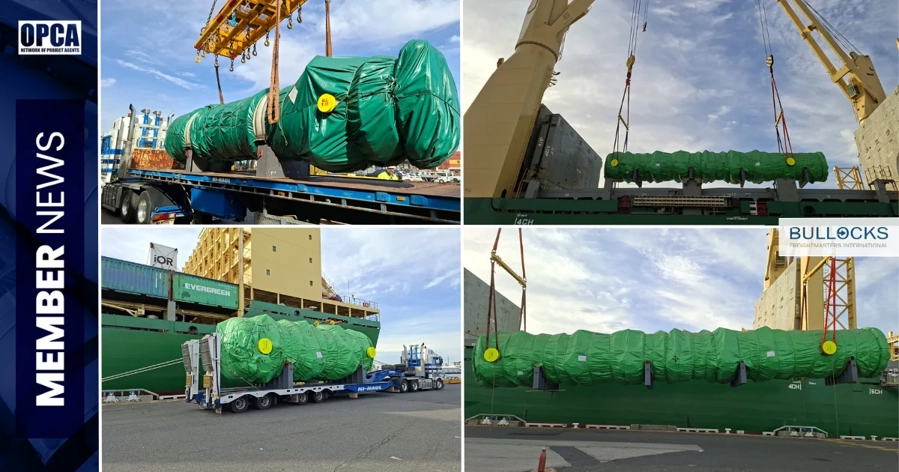What is a Freight Shipping Pallet?
Table of Contents
The freight shipping pallet functions as a flat transport platform which maintains goods stability during forklift or pallet jack or other equipment lifting operations. The logistics industry depends on shipping pallets to ensure both safe and efficient handling and storage and transportation of goods. Standardized dimensions of shipping pallets enable easy and quick loading and unloading operations for most transportation equipment. The platforms serve as the foundation for pallet shipping companies to handle big shipments particularly when shipping internationally.
Businesses that ship goods must understand the various pallet types together with their shipping pallet dimensions (eg. shipping pallet size). The cost of shipping pallet depends on its dimensions along with its material composition and the nature of transported goods.
What Materials Are Used in Shipping Pallets?
The production of shipping pallets involves different materials which match specific requirements according to shipping goods types and transportation methods and delivery distances. The primary materials used for shipping pallets consist of wood and plastic and metal.
Plastic Shipping Pallet
The production of plastic shipping pallets utilizes high-density polyethylene together with other plastic materials. The durable lightweight plastic pallets show resistance to moisture which makes them suitable for pharmaceutical and food production industries. The reusable nature of plastic shipping pallets enables companies to decrease their expenses throughout time.
Plastic shipping pallets exist in different dimensions while being more costly than wooden pallets yet they deliver superior protection for transported goods. The ease of cleaning and sterilization makes plastic shipping pallets popular for international shipping because they meet strict hygiene requirements.
Wood Shipping Pallet
The shipping industry primarily uses wood shipping pallets as its most prevalent pallet type. The affordability and broad availability of wood make it a preferred material for businesses that want to reduce shipping expenses. Standard shipping pallet size for wood pallets in shipping follow industry norms at 48 x 40 inches but manufacturers can produce different sizes according to cargo requirements.
The susceptibility of wooden pallets to moisture and pests requires them to fulfill specific phytosanitary standards when used for international shipping pallets. Wood pallets continue to serve as the most economical and prevalent pallet solution throughout the logistics and shipping industry.
What are the Different Types of Shipping Pallets?
Logistics operations utilize different shipping pallet types which match particular shipping requirements through their unique characteristics. The most widely used shipping pallet sizes include:
- Standard Pallets function as the primary shipping pallet size because they follow standard measurements at 48 x 40 inches. Standard shipping operations use these pallets which manufacturers produce from wood or plastic materials.
- The European Pallets measure 1200 mm x 800 mm in size which differs from standard pallet dimensions. The European market uses these pallets extensively because they exist in wood and plastic forms.
- The shipping industry uses Double-Deck Pallets as heavy-duty transportation solutions because they consist of two stacked layers. The construction of these pallets uses metal or reinforced wood materials to support heavy loads in shipping operations.
- Specialized shipping requirements lead to the creation of custom pallets which meet particular dimensions or requirements. The production of these pallets depends on cargo nature because they can be constructed from wood, plastic or alternative materials.
What Are the Standard Sizes for Pallets?
The United States standard shipping pallet sizes 48 x 40 inches which the industry calls GMA pallet (Grocery Manufacturers Association). The GMA pallet (Grocery Manufacturers Association) represents the standard 48 x 40 inches pallet size which North American pallet shipping companies primarily use.
The European Pallet Association (EPAL) specifies 1200 mm x 800 mm as the standard pallet size for European countries. The two sizes were designed to fit standard truck and container and transportation equipment dimensions which enables efficient loading of goods.
What Are the Phytosanitary Standards for Shipping Pallets?
The process of international goods shipping requires following phytosanitary standards for pallets especially when using wooden pallets. The International Plant Protection Convention (IPPC) together with other organizations established these standards to stop pests and diseases from spreading through wooden materials. The ISPM 15 standard demands that wooden pallets need to undergo treatment methods such as heat treatment or fumigation to eliminate any pest presence.
The non-compliance with these standards leads to customs delays and possible fines and shipment rejection. Businesses that ship international pallets need to verify their pallets fulfill the necessary phytosanitary standards because of this requirement.
Shipping Skid vs Pallet
A shipping skid functions similarly to a shipping pallet yet possesses distinct characteristics. The structure of a skid lacks a bottom deck because it depends on its top and bottom beams for support. The design of skids results in lower weight and reduced costs compared to full pallets yet they provide less stability for heavy or fragile loads.
The full support structure of pallets makes them more stable than skids when transporting goods. Skids serve lightweight and non-fragile shipments but most shipping operations including international shipping prefer pallets as their primary choice.
OPCA: Connecting Trusted Partners for Global Freight Shipping
The Overseas Project Cargo Association (OPCA) provides businesses with access to project cargo freight forwarders and logistics partners who deliver optimal shipping solutions for their requirements. Through membership in OPCA businesses gain access to dependable freight companies which enables them to optimize their shipping pallet operations for secure and efficient transportation.
The project cargo freight forwarders in OPCA’s network help businesses solve their specialized shipping requirements for heavy and oversized or complex cargo. OPCA members benefit from top-tier expertise and worldwide reach through their membership which helps them handle international shipping pallet logistics and regulatory compliance and complex transportation projects. Membership in OPCA enables businesses to gain market advantage through access to multiple trusted service providers who deliver efficient and cost-effective shipping solutions.
_logo.webp)



